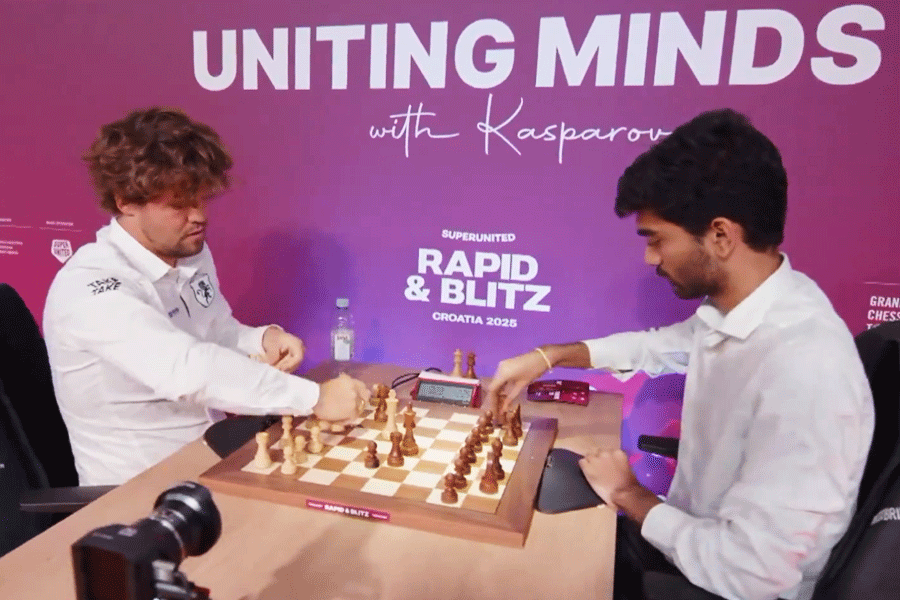 |
| A tribal artist holds a scroll painting popularly known as Jadu Patua displayed at the Tribal Research Institute in Ranchi. Picture by Hardeep Singh |
The state art and culture department will revive a 100-year-old art of scroll-painting popularly referred as, Jadu Patua, which mainly deals with miseries faced after death.
This form of art is traditionally prevalent among tribals residing in Santhal Pargana and Singhbhum pockets.
The artists earn their livelihood by narrating stories based on paintings carved in black on elongated white paper.
The paintings drawn by these tribals are mostly of figurative forms.
These artists then travel from one village to another and scroll the roll like a calendar.
During course of their narration, they sing in local languages and, in return, receive items such as rice ,wheat and other foodstuff from the villagers.
According to beliefs, these artists prepare scroll paintings by carving out scenes from Gadud Puran ? which mostly deal with the miseries that one suffers after death.
The artists? narrations include those of people who have died and have appeared in their dreams.
Upon hearing the stories, villagers start crying as their near and dear ones are in pain.
The artists then tell the villagers to donate in kind or cash to minimise the suffering of their relatives.
Tribals in Santhal Pargana are referred to as Jadu Baba, while those in Singhbhum are called Patkar in local languages.
The tribals consider themselves to be part of the priestly caste.
But according to sources, the number of tribals involved in the art form are decreasing at an alarming rate, as the younger generation no longer want to continue the legacy of their forefathers.
Instead, the young have chosen professions mainly carpentry and opened shops. Some have also taken up selling bangles.
The state art and culture department estimates that there are around 85 such artists in Dumka, and 25 to 30 in the Singhbhum area
The department said that the paintings are so impressive that they should be revived.
?We are organising a pottery workshop after September in Tassidih, near Deoghar,? said sources.
The workshop will see these traditional painters asked to paint their designs on on black pottery.
A workshop was also recently organised at Deoghar and Chaibasa in March 2006.
?In Jharkhand, the fusion of Jadu and contemporary art might have good results,? said sources.
Officials said they would like the tribal artists to meet modern artists.
?We would also bring in contemporary artists during the course of a workshop and try to get them interact along with the modern artists so that they can learn the finer nuances of modern art. It may help them to revive their age-old art,? added sources.
Sources in the department said that earlier Jadu Patua artists were exploited, but now department has come to their aid.
?No longer will their art be lost, as department is trying to help. The artists will also be given paint brushes and paints. There can be a course where contemporary artists can learn their style and the tribal artists can learn contemporary art,? said sources.
There are around five to six Jadu Patua paintings at Tribal Research Institute (TRI).
?It should be modernised. Presently only black is used, but fabric paints can also be made available to make the artwork more attractive,? said Nutan Sinha, technical assistant at TRI.










